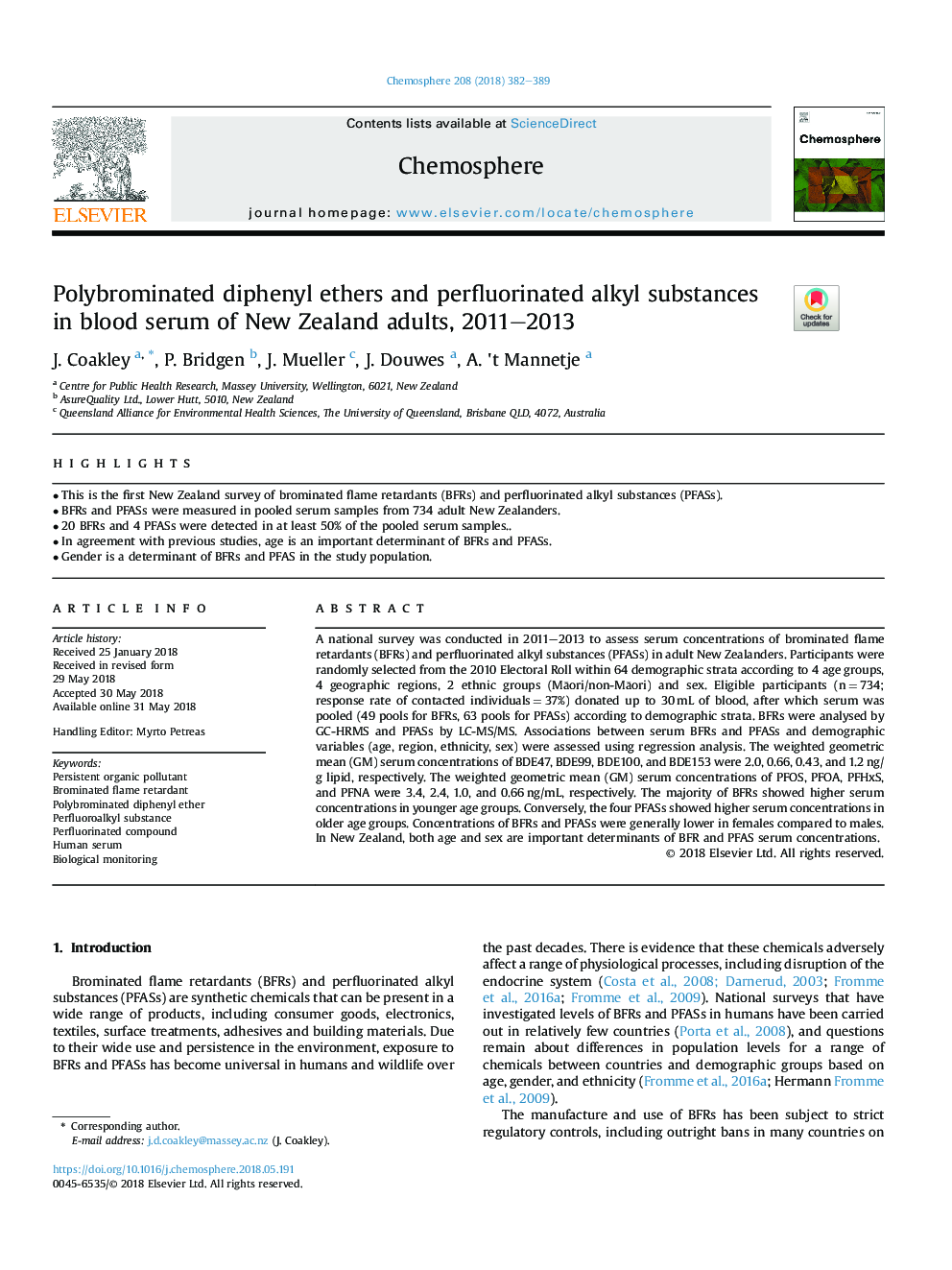| Article ID | Journal | Published Year | Pages | File Type |
|---|---|---|---|---|
| 8850680 | Chemosphere | 2018 | 8 Pages |
Abstract
A national survey was conducted in 2011-2013 to assess serum concentrations of brominated flame retardants (BFRs) and perfluorinated alkyl substances (PFASs) in adult New Zealanders. Participants were randomly selected from the 2010 Electoral Roll within 64 demographic strata according to 4 age groups, 4 geographic regions, 2 ethnic groups (MÄori/non-MÄori) and sex. Eligible participants (nâ¯=â¯734; response rate of contacted individualsâ¯=â¯37%) donated up to 30â¯mL of blood, after which serum was pooled (49 pools for BFRs, 63 pools for PFASs) according to demographic strata. BFRs were analysed by GC-HRMS and PFASs by LC-MS/MS. Associations between serum BFRs and PFASs and demographic variables (age, region, ethnicity, sex) were assessed using regression analysis. The weighted geometric mean (GM) serum concentrations of BDE47, BDE99, BDE100, and BDE153 were 2.0, 0.66, 0.43, and 1.2â¯ng/g lipid, respectively. The weighted geometric mean (GM) serum concentrations of PFOS, PFOA, PFHxS, and PFNA were 3.4, 2.4, 1.0, and 0.66â¯ng/mL, respectively. The majority of BFRs showed higher serum concentrations in younger age groups. Conversely, the four PFASs showed higher serum concentrations in older age groups. Concentrations of BFRs and PFASs were generally lower in females compared to males. In New Zealand, both age and sex are important determinants of BFR and PFAS serum concentrations.
Keywords
Related Topics
Life Sciences
Environmental Science
Environmental Chemistry
Authors
J. Coakley, P. Bridgen, J. Mueller, J. Douwes, A. 't Mannetje,
